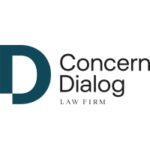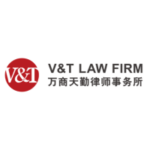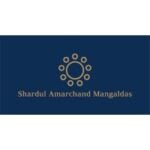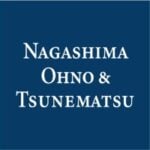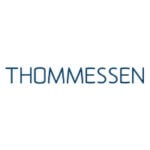-
What are the main methods of resolving disputes in your jurisdiction?
The three main methods in Singapore for resolving disputes are litigation, arbitration, and mediation. For litigation matters, civil proceedings may generally be commenced in either the Supreme Court or the State Courts, depending on the nature and quantum of the claim. Litigants with a transnational commercial dispute can also seek recourse though the Singapore International Commercial Court (“SICC”), which is part of the Supreme Court of Singapore. Parties seeking a confidential mode of dispute resolution can choose arbitration through a suitably worded arbitration agreement. In Singapore, domestic arbitration is governed by the Arbitration Act 2001, whereas international arbitration is governed by the International Arbitration Act 1994. Singapore is a party to the United Nations Convention on the Recognition and Enforcement of Foreign Arbitral Awards, also known as the New York Convention. In recent years, the Singapore International Arbitration Centre (“SIAC”) has grown to become one of the most widely used arbitration centres in the Asia-Pacific region and the world. Mediation is suitable where the parties agree to seek a consensual resolution of the dispute. In Singapore, the enforceability of mediation agreements is governed by the Mediation Act 2017. Mediation is also supported by various public and private institutions, such as the Singapore Mediation Centre, the Singapore International Mediation Centre and the State Courts. Singapore hosted the signing ceremony of the United Nations Convention on International Settlement Agreements Resulting from Mediation in 2019 (also known as the Singapore Convention on Mediation) and is a party to the convention. The Singapore Convention on Mediation provides a harmonised framework for the enforcement and invocation of international settlement agreements resulting from mediation. As of 14 May 2025, the Singapore Convention on Mediation has 57 signatories and 18 parties.
-
What are the main procedural rules governing litigation in your jurisdiction?
The main procedural rules governing commercial litigation in Singapore are the Rules of Court (“ROC”). The ROC govern not just the procedural aspects of litigation but also some substantive aspects, such as when a party must provide particulars of its pleadings or produce documents requested by the counterparty. The ROC are supplemented by the Supreme Court Practice Directions and the State Courts Practice Directions, which provide further practical guidance on procedural rules to counsel and litigants. The ROC were revamped in 2021 with the aim of modernising the litigation process and enhancing the efficiency and speed of adjudication, while also maintaining costs incurred by litigants at reasonable levels. The Rules of Court 2021 (“ROC 2021”) took effect from 1 April 2022 and apply to all civil proceedings, including appeals, commenced on or after 1 April 2022. The saving and transitional provisions in the ROC 2021 provide for, among other things, the Rules of Court (Cap. 322, R 5, 2014 Rev. Ed.) (“ROC 2014”) to continue to apply to civil proceedings, including appeals, filed before 1 April 2022.
Where proceedings in the SICC are concerned, cases commenced in the SICC before 1 April 2022 are governed by the ROC 2014, as modified by Order 110 contained therein. Cases commenced in the SICC on or after 1 April 2022 are governed by the Singapore International Commercial Court Rules 2021 (“SICC Rules 2021”). Parties may also consent in writing for the SICC Rules 2021 to apply, with the necessary modifications, to cases that would otherwise be governed by the ROC 2014. The application of the SICC Rules 2021 is governed by Order 1, rule 2 therein.
-
What is the structure and organisation of local courts dealing with claims in your jurisdiction? What is the final court of appeal?
The Supreme Court comprises the Court of Appeal and the High Court. The High Court has been restructured in recent years and now comprises the General Division of the High Court (“General Division”) and the Appellate Division of the High Court (“Appellate Division”). The SICC is a division of the General Division. The State Courts comprise the District Courts, Magistrates’ Courts, Coroners’ Courts, Small Claims Tribunals, Community Disputes Resolution Tribunals and Employment Claims Tribunals. The jurisdiction of each court differs primarily in the quantum and/or the nature of the claims that each court can hear. In general, only certain types of claims which do not exceed S$20,000 in quantum may be heard by the Small Claims Tribunals. However, this limit may be increased to S$30,000 if both parties consent in writing to the same (section 2 read with section 5 of the Small Claims Tribunals Act 1984). In accordance with section 2 read with section 52(1A) of the State Courts Act 1970 (“SCA”), civil claims not exceeding S$60,000 in quantum may be heard in the Magistrates’ Courts. Pursuant to section 2 read with section 19(4) of the SCA, civil claims for more than S$60,000 but not exceeding S$250,000 in quantum may be heard in the District Courts. Civil claims which exceed S$250,000 in quantum are heard by the High Court.
The General Division exercises original and appellate jurisdiction. In some cases, appeals cannot be brought against decisions of the General Division, although the circumstances where there is no such right of appeal are limited. Appeals arising from a decision of the General Division in civil matters are allocated between the Appellate Division and the Court of Appeal in accordance with the statutory framework set out in the Supreme Court of Judicature Act 1969 (“SCJA”). The Sixth Schedule to the SCJA lists the types of civil appeals that are to be made to the Court of Appeal, which includes appeals against decisions of the SICC. Generally, appeals on most matters fall under the jurisdiction of the Appellate Division, with the possibility of further appeal to the Court of Appeal in limited circumstances. The Court of Appeal is the final appellate court in Singapore and can hear appeals arising from the Appellate Division and the General Division. Certain appeals require leave of court before they can be heard by the Court of Appeal.
-
How long does it typically take from commencing proceedings to get to trial in your jurisdiction?
This substantially depends on the number of interlocutory applications taken out at the pre-trial stage. Nevertheless, case conferences (previously referred to as ‘pre-trial conferences’) expedite proceedings commenced in the Singapore courts, as part of a proactive case management system. This allows the court to monitor the progress of cases and make the necessary directions to facilitate the progress of a case to trial. Relatedly, prior to the parties’ first case conference, they are required to complete a Pre-Case Conference Questionnaire, which requires them to consider the key issues in the dispute at hand, among other things. This exercise helps the Court and parties identify the key issues in dispute and potential points of agreement between the parties. Separately, the ROC contain various procedures for the early resolution of claims, such as the filing of summary judgment or striking out applications, which enable certain clear-cut cases to be decided without the need for a full trial. If such applications are successful, cases can potentially be resolved within a matter of months.
Under the ROC 2021, proceedings are now more streamlined. Under the new rules, the court must, as far as possible, order parties to file a single application pending trial (“SAPT”) to deal with all matters that are necessary for the case to proceed expeditiously. Parties will have to indicate at an early stage of the proceedings which interlocutory applications they intend to file and will have to file them in a single interlocutory application. Interlocutory applications which are intended to be dealt with as part of the SAPT include, among others: applications for production of documents, interim relief, striking out part of an action or defence, and the addition or removal of parties (see Order 9, rule 9(4) of the ROC 2021). If a party wishes to take out an application which should ordinarily be taken out as part of the SAPT at any other time, the Court’s permission must be sought. However, certain types of applications can be filed at any time prior to the period starting 14 days before the commencement of trial without the Court’s permission. Such applications include, among others: applications for summary judgment, service out of jurisdiction, striking out of the whole of an action or defence, or a stay of the whole action (see Order 9, rule 9(7) of the ROC 2021).
-
Are hearings held in public and are documents filed at court available to the public in your jurisdiction? Are there any exceptions?
Hearings are generally open to the public, other than case conferences and hearings that take place in Judges’ and Registrars’ chambers. A hearing may also be closed to the public in exceptional circumstances, such as a hearing involving the testimony of a vulnerable witness. Parties involved in international commercial cases before the SICC can also apply for, among other things, their respective cases to be heard in private. Conversely, court proceedings under the Arbitration Act 2001 and the International Arbitration Act 1994 are to be heard in private by default, although an application can be made by any person (including a person who is not party to the proceedings) for the matter to be heard in open court. The court may also order on its own motion that such proceedings be heard in open court.
A person may apply to inspect case files and court documents under Order 26, rule 3 of the ROC 2021 (or if a case is governed by the ROC 2014, Order 60, rule 4 therein). A request to inspect court documents must be filed to court and is subject to the approval of the Registrar and payment of the applicable fees. It is possible for parties (especially in cases related to proceedings under the Arbitration Act 2001 and International Arbitration Act 1994) to apply for the court files for their cases to be sealed, which will mean that the files cannot be inspected by members of the public.
-
What, if any, are the relevant limitation periods in your jurisdiction?
The relevant limitation periods for different kinds of claims are set out in the Limitation Act 1959 (“LA”). The LA applies to arbitral proceedings as it applies to proceedings before any court.
For civil claims in contract or tort, the limitation period is generally 6 years from the date on which the cause of action accrues (section 6(1)(a) of the LA). Part 3 of the LA also provides for the extension and postponement of limitation periods in certain circumstances.
As for civil claims which concern trust property or breaches of trust, where no limitation period is prescribed by any other provision of the LA, the applicable limitation period is 6 years from the date on which the right of action accrues (section 22(2) of the LA). However, this rule is subject to section 22(1) of the LA, which states that no period of limitation prescribed by the LA shall apply to an action by a beneficiary under a trust if the action is in respect of any fraud or fraudulent breach of trust to which the trustee was a party or privy, or if the action is brought to recover from the trustee trust property or any proceeds thereof. The Court of Appeal also decided in Esben Finance Ltd and others v Wong Hou-Lianq Neil [2022] 1 SLR 136 that claims in unjust enrichment do not fall within the ambit of the LA and are therefore not subject to a time bar.
Separately, an action upon any judgment cannot be brought after the expiration of 12 years from the date on which the judgment became enforceable (section 6(3) of the LA).
In cases where foreign law is to be applied to determine any matter before the Singapore courts, the Foreign Limitation Periods Act 2012 (“FLPA”) provides that the limitation periods under that foreign law will generally apply to the exclusion of the limitation periods under Singapore law (see sections 3 and 4 of the FLPA). As with the LA, the FLPA applies to arbitral proceedings as it applies to proceedings before any court.
-
What, if any, are the pre-action conduct requirements in your jurisdiction and what, if any, are the consequences of non-compliance?
Generally, under the ROC 2021, a party must consider amicable resolution of the dispute (“ADR”) before the commencement of the action. The duty for parties to consider ADR is set out in Order 5 of the ROC 2021. Specifically, a party has to make an ADR offer before commencing the action unless the party has reasonable grounds not to (Order 5, rule 1(2) of the ROC 2021). In line with this, Paragraph 53(2) of the Supreme Court Practice Directions 2021 provides that it is the professional duty of solicitors to advise their clients to consider ADR as well as to give their clients sufficient information about the different ways in which their disputes may be resolved using an appropriate form of ADR. The Court may disallow or reduce a successful party’s costs or order that party to pay costs if that party has not discharged that party’s duty to consider amicable resolution of the dispute or to make an offer of amicable resolution in accordance with Order 5 of the ROC 2021 (Order 21, rule 4(c) of the ROC 2021).
Additionally, for claims heard in the General Division, a pre-action protocol has been established specifically for medical negligence cases, with the objective of enabling an assessment of whether a claimant has a viable cause of action and to facilitate the swift resolution of the dispute. The parties are required to, amongst other things, undergo pre-action discovery of documents, including any expert report(s). The protocol may be found at Appendix H of the Supreme Court Practice Directions 2021. For claims heard in the State Courts, pre-action conduct requirements apply for the following types of cases: defamation, medical negligence, personal injury claims, and non-injury motor accident actions. These protocols may be found in Appendices B, E, and F of the State Courts Practice Directions 2021. For claims heard in the SICC, a pre-action protocol has been established for certain claims pertaining to technology, infrastructure, or construction disputes as prescribed by paragraph 154 and Part 1 to Appendix G of the SICC Practice Directions. Generally, non-compliance with pre-action conduct requirements may result in adverse costs orders being made against the party in breach.
-
How are proceedings commenced in your jurisdiction? Is service necessary and, if so, is this done by the court (or its agent) or by the parties?
Civil proceedings are commenced by way of an Originating Claim (“OC”) where material facts and law are in dispute, or an Originating Application (“OA”) where material facts and law are not in dispute (Order 6, rules 1(2) and (3) of the ROC 2021). Either an OC or an OA would be used in cases of original jurisdiction, whereas appeals from lower courts utilise their own mechanism.
The procedural steps for an OC and OA are broadly similar. Both require personal service on the defendant within 3 months from the date of issue when the Registrar numbers, signs and seals the claim/application. This 3-month period can be extended by application if it is not served on all defendants before expiry. In deciding whether to grant an extension, the court must first be satisfied that there is a good reason to extend time. Thereafter, the court will take into account the balance of prejudice or hardship between parties and any relevant limitation period to which the defendant has a right.
Personal service is required for service of an OC or OA. Claimants need to take all reasonable steps to effect personal service whether in Singapore (14 days) or out of Singapore (28 days). Outside the context of an OC or OA, personal service is to be performed where expressly required under the ROC 2021 or any written law, or where the court orders such service, or where the serving party decides to do so voluntarily (Order 7, rule 1 of the ROC 2021). Personal service can be performed on a natural person or entity by (Order 7, rule 2 of the ROC 2021): a process server of the court, a solicitor, a solicitor’s employee, a litigant who is not legally represented or such a person’s employee, or any other person that the Registrar may allow. Parties can apply for substituted service at a case conference if it is impractical to serve personally, and the court may order any suitable method of substituted service, including electronic means (Order 7, rule 7 of the ROC 2021).
Service out of jurisdiction is possible with the leave of court. To obtain leave, a claimant must, per Order 8, rule 1 of the ROC 2021, show that the court has jurisdiction or is the appropriate court to hear the action. This requires the claimant to show that there is a good arguable case of sufficient nexus to Singapore, that Singapore is the forum conveniens, and there is a serious question to be tried on merits. These requirements are set out in Practice Direction 63(2) of the Supreme Court Practice Directions 2021, and the claimant should refer to the factors set out in Practice Direction 63(3) of the Supreme Court Practice Directions 2021. Additionally, if the claimant is able to demonstrate that the originating process is unlikely to be served on all or any of the defendants out of Singapore before it expires, the claimant is to consider making an application to extend the validity of the originating process in a single summons, together with the application for approval to serve the originating process out of Singapore (Practice Direction 63(4) of the Supreme Court Practice Directions 2021).
-
How does the court determine whether it has jurisdiction over a claim in your jurisdiction?
Original Jurisdiction
For civil claims commenced in the Supreme Court, section 16 of the SCJA states that the General Division has jurisdiction to hear any action where: (a) the defendant has been duly served with any originating process of a claim in a Singapore court whether within or outside of Singapore; or (b) if the defendant has submitted to the jurisdiction of the General Division. Even if a court has jurisdiction, a court may decline to exercise its jurisdiction in certain circumstances, for instance, where it is of the view that Singapore is not the appropriate forum for the dispute to be heard.
Section 3 of the High Court (Admiralty Jurisdiction) Act 1961 states that in respect of ships, questions or claims in relation to, inter alia, ownership and possession of a ship, damage done by a ship, or damage received by a ship fall within the High Court’s jurisdiction.
Furthermore, the High Court and Court of Appeal have inherent jurisdiction to hear and punish for contempt of Court, as held in the case of Li Shengwu v The Attorney-General [2019] 1 SLR 1081.
Original jurisdiction is also allocated by the quantum of the claim. The Magistrates’ Courts hear cases where the amount claimed is under S$60,000 (section 52(1A)(b) read with section 2 of the SCA). The District Courts hear cases for amounts between S$60,000 and S$250,000 (section 19(4) read with section 2 of the SCA). The High Court hears cases involving amounts over S$250,000.
Appellate Jurisdiction
Sections 20-22 of the SCJA set out the appellate jurisdiction of different levels of Singapore Courts. Section 20 of the SCJA states that appellate civil jurisdiction of the General Division consists of the hearing of appeals from Family Courts, District Courts and Magistrates’ Courts when exercising jurisdiction of a quasi-criminal or civil nature, and other tribunals. Section 21 of the SCJA states that appeals from a District Court or Magistrates’ Court can only be heard with permission of that court where the dispute amount does not exceed S$60,000 or concerns any case in the Third Schedule to the SCJA. Section 22 of the SCJA outlines the General Division’s powers of rehearing.
Singapore International Commercial Court
The SICC’s jurisdiction is provided under Sections 18A-18M of the SCJA. It may hear international commercial matters which the General Division may otherwise hear and try in its original civil jurisdiction, provided that the relevant rules under the ROC 2021 are satisfied. It may also hear any proceedings relating to international commercial arbitration that the General Division may hear and that satisfy such conditions as the ROC 2021 provide.
-
How does the court determine which law governs the claims in your jurisdiction?
Claims in contract
The court will apply the governing law of the contract for claims in contract, which is determined using a three-stage process (Pacific Recreation Pte Ltd v S Y Technology Inc and another appeal [2008] 2 SLR(R) 491):
- First, if the contract itself provides for its governing law, that is recognised as the parties’ express choice. Such a choice will be valid if there is no reason for voiding the choice on the ground of public policy.
- Second, if there is no express choice of law, the court will consider whether the common intention of the parties can be inferred from the circumstances surrounding the contract. Some of the non-exhaustive factors the court will consider are the commercial purposes of the transaction and the express contractual terms – for example, if there is an exclusive jurisdiction clause in favour of a specific country’s courts.
- Third, if there is neither an express nor an implied choice of law, the court will objectively consider which system of law has the closest and most real connection with the contract.
Claims in tort
Claims for torts committed in Singapore are generally governed by Singapore law.
Claims for torts committed outside of Singapore, but brought before the Singapore courts, will generally be subject to the ‘double actionability rule’, which provides that a tort is only actionable in Singapore if the alleged wrong is actionable under both Singapore law and the law of the place where the wrong was committed (Rickshaw Investments Ltd v Nicolai Baron von Uexkull [2007] 1 SLR 377).
The court has also recognised an exception to the ‘double actionability rule’, where a tort may nonetheless be actionable in Singapore even though one of the limbs under the ‘double actionability rule’ is not satisfied. In such a case, the court will apply the law of a third jurisdiction which has the most significant relationship with the alleged wrong and with the parties. This exception is strictly applied only in limited circumstances where the ‘double actionability rule’ would cause injustice or unfairness – for example, where the parties and other connecting factors have nothing to do with Singapore or the place where the wrong was committed.
-
In what circumstances, if any, can claims be disposed of without a full trial in your jurisdiction?
Default judgment
Pursuant to Order 6, rule 6(1) and (2) read with rule 6(5) of the ROC 2021, the claimant may apply for judgment against a defendant that fails to serve a notice of intention to contest or not contest the claim within:
- 14 days after the statement of claim is served on the defendant in Singapore; or
- 21 days after the statement of claim is served on the defendant outside of Singapore.
Pursuant to Order 6, rule 7(1) and (2) read with rule 7(7) of the ROC 2021, the claimant may apply for judgment in default of defence against a defendant that fails to serve a defence within:
- 21 days after the statement of claim is served on the defendant in Singapore; or
- 5 weeks after the statement of claim is served on the defendant outside of Singapore.
Summary judgment and disposal of case on point of law
Pursuant to Order 9, rule 17(1) of the ROC 2021, a claimant can apply for summary judgment against a defendant after the defence has been filed and served on the ground that the defendant has no real defence to a claim or any part of the claim (except for the amount of damages claimed). However, the defendant may resist the application for summary judgment by raising one or more triable issues.
Pursuant to Order 9, rule 19 of the ROC 2021, upon a party’s application or on the court’s own accord, the court may decide any question of law or the construction of any document without a trial or hearing on the facts, whether or not such decision will fully determine the action. Where the court’s decision fully determines the entire matter or any claim therein (subject only to any appeal), the court may give judgment or dismiss the action or make any order that is appropriate.
Judgment on admission of facts
Pursuant to Order 9, rule 18 of the ROC 2021, the court must direct parties to agree on as many material facts as possible and to set them out in an agreed statement of facts at as early a stage as possible. Where such admissions of fact are made in a party’s pleadings or other documents, either party can apply for the court to give judgment on those admissions.
Striking out
Pursuant to Order 9, rule 16(1) of the ROC 2021, any party can apply for the court to strike out or amend any or a part of any pleading on the ground that it: (a) discloses no reasonable cause of action or defence; (b) is an abuse of process of the court; or (c) is in the interests of justice to do so. The three grounds are separate and distinct, and are framed to be alternatives to each other.
A striking out will be granted only when the pleading is legally or factually unsustainable. The threshold for striking out is high, and the three grounds are not interpreted liberally.
-
What, if any, are the main types of interim remedies available in your jurisdiction?
The main types of interim remedies are governed by Order 13 of the ROC 2021, examples of which are set out below.
- Interim injunctions or search orders (Order 13, rule 1): A party may apply for an injunction or a search order even if a claim for such relief was not included in that party’s originating process. In an urgent case, a claimant may also apply for an injunction or a search order before the originating process is issued. Examples of injunctions include mandatory injunctions, prohibitory injunctions, quia timet injunctions, anti-suit injunctions and Mareva injunctions (domestic and worldwide) to freeze the assets of a defendant.
The claimant can make any of the above applications without serving it on the defendant, but the affidavit supporting the application has to state the urgency, explain why the defendant should not be informed about the application and set out the merits of the application. For each type of injunction, different requirements on the merits may arise. For instance, unlike Mareva injunctions, applications for proprietary injunctions do not require proof of a real risk of dissipation of assets.
Such a claimant would also have the duty to disclose to the court all material facts that the claimant knows or reasonably ought to know, including any matter that may affect the merits of either party’s case adversely (The “Vasiliy Golovnin” [2008] 4 SLR(R) 994).
- Detention, preservation, etc., of subject matter of action (Order 13, rule 2): The court may order the detention, custody or preservation of any property which is the subject matter of or may give rise to issues in an action. The court may authorise any person to enter upon any immovable property to effect any detention, custody and/or preservation orders made.
- Interim payment (Order 13, rule 8): A claimant may apply for interim payment to be made by one or more of the defendants. The claimant’s affidavit must state (a) the amount of the claimant’s claim; (b) whether the defendant has admitted liability or has been found liable for any part of the claim, and if not, why the claimant believes he has a strong case against the defendant; and (c) why the claimant requires an interim payment to be made at this stage of the proceedings. The court may then order interim payment of any amount to be made by the defendant after taking into consideration all the above factors, any contributory negligence, set-off or counterclaim that the defendant has relied on and the defendant’s ability to make the interim payment.
-
After a claim has been commenced, what written documents must (or can) the parties submit in your jurisdiction? What is the usual timetable?
The general timetable for filing written documents in an OC is as follows:
- The claimant will file and serve an OC, which can either be endorsed generally or accompanied by a statement of claim. If the OC is endorsed generally, the claimant must serve the statement of claim within 14 days after the OC has been served.
- The timeline for filing and service of the defence depends on whether the defendant was served with the OC in or out of Singapore:
- In Singapore: a defendant has 14 days to file and serve a notice of intention to contest or not contest the claim and 21 days to file and serve a defence to the OC. Time starts running from when the statement of claim is served on the defendant.
- Out of Singapore: a defendant has 21 days to file and serve a notice of intention to contest or not contest the claim and 5 weeks to file and serve a defence to the OC. Time starts running from when the statement of claim is served on the defendant.
- The defendant can also decide to file and serve a counterclaim together with the defence, following which the claimant has 14 days to file and serve a defence to the counterclaim. If the defendant does not bring a counterclaim, no further pleadings are allowed after the service of the defence except with the approval of the court.
- A case conference will generally be held within 8 weeks after the OC is issued. The purpose of the case conference is for the court to set the timelines for the proceedings, including the timelines for production of documents and for any interlocutory applications that the parties may wish to take out prior to trial.
- In all civil trials in Singapore, the evidence of witnesses is given by way of affidavit. Prior to trial, parties must file and exchange the affidavits of evidence-in-chief of all witnesses in accordance with the timelines set by the court. In appropriate cases, the court may order the parties to file and serve their lists of witnesses and affidavits of evidence-in-chief early in the proceedings, even before the stage of document production.
- Finally, at trial, counsel will submit written opening statements and closing submissions containing all legal submissions for their case.
- Pursuant to Order 6, rule 10 of the ROC 2021, beyond the filing of the defence to counterclaims, no further pleading can be filed unless the court decides that such further pleadings are “necessary”. The court can only order further pleadings during a subsequent case conference.
If a matter in court is unlikely to involve disputes of fact, the claimant also has the option of filing an OA. Generally speaking, this is a quicker process where the dispute will be resolved on affidavit evidence without the need for a civil trial. The general timetable for filing written documents in an OA is as follows:
- The claimant will file and serve an OA supported by affidavit evidence.
- If the defendant wishes to introduce evidence in respect of the OA, it can file the defendant’s affidavit evidence on the merits. The timeline for the defendant’s affidavits on the merits depends on whether the defendant was served with the OA in or out of Singapore:
-
- In Singapore: 21 days to file and serve the defendant’s affidavit evidence after being served with the claimant’s OA and affidavit evidence.
- Out of Singapore: 5 weeks to file and serve the defendant’s affidavit evidence after being served with the claimant’s OA and affidavit evidence.
- Except in a special case, no further affidavits may be filed after the filing of the defendant’s affidavit on the merits, and the parties will proceed towards the filing of written submissions before the hearing of the OA.
-
What, if any, are the rules for disclosure of documents in your jurisdiction? Are there any exceptions (e.g. on grounds of privilege, confidentiality or public interest)?
Pursuant to Order 11, rule 2 of the ROC 2021, the court may, at a case conference, order that the parties exchange a list of and a copy of all documents in their possession or control, falling within one or more of the following categories, within 14 days after the date of the case conference:
- all documents that the party in question will be relying on;
- all known adverse documents (which includes documents which a party ought reasonably to know are adverse to that party’s case); and
- where applicable, documents that fall within a broader scope of discovery which have been agreed between the parties or as ordered by the court.
Additionally, pursuant to Order 11, rule 3 of the ROC 2021, the court may order any party to produce the original or a copy of a specific document or class of documents in the party’s possession or control, if the requesting party:
- properly identifies the requested documents;
- shows that the requested documents are material to the issues in the case; and
- makes an application for such disclosure.
The duty of disclosure continues throughout the proceedings, such that if further documents come into a party’s possession or control during the proceedings, that party will have a duty to produce those documents within 14 days. However, this continuing duty does not extend to adducing further evidence which are unrelated to the issues before the court.
A party’s failure to comply with its document production obligations may result in serious consequences. The court may make an order that the action be dismissed, or that the defence be struck out and judgment entered accordingly. The court may also punish that party for contempt of court or draw any adverse inferences as may be appropriate.
There are some exceptions to disclosure:
- First, documents subject to privilege need not be disclosed. This includes documents subject to legal advice privilege and/or litigation privilege, which cover respectively a party’s communications with its lawyers for the purpose of obtaining legal advice and any communications or documents sent or created for the dominant purpose of litigation. If any other party seeks disclosure of a document over which privilege has been asserted, it is for the party seeking disclosure to show that the document is not privileged (Order 11 rule 5(3) of the ROC 2021).
- Second, the court will not order the production of any document that is part of a party’s private or internal correspondence unless such correspondence are known adverse documents (Order 11 rule 5(2) of the ROC 2021).
- Third, the court will not order the production of any document where such production would be contrary to the public interest (Order 11 rule 5(3) of the ROC 2021).
- Lastly, the court will not order production of any documents that merely leads a party on a train of inquiry to other documents (Order 11 rule 5(1) of the ROC 2021).
For completeness, the fact that a document is confidential is not in itself a sufficient ground for a party to withhold production of that document (Order 11 rule 9(1) of the ROC 2021).
It will be apparent that the scope of disclosure under the ROC 2021 is narrower than under previous rules of court. The 2021 rules place emphasis on the disclosure of “material” documents. This concept displaces the prior disclosure criteria of “relevance” and “necessity”.
-
How is witness evidence dealt with in your jurisdiction (and in particular, do witnesses give oral and/or written evidence and what, if any, are the rules on cross-examination)? Are depositions permitted?
A witness’ evidence-in-chief at trial is generally given in writing through an affidavit of evidence-in-chief. In special circumstances, the court may allow such evidence to given orally. The witness may then be cross-examined by the opposing party and then re-examined by the party on whose behalf the witness is giving evidence.
An affidavit of evidence-in-chief must contain all material facts which cannot be departed from or supplemented by new facts in oral evidence, unless the new facts relate to matters which occurred after making the affidavit. Unless parties otherwise agree, a witness’ affidavit of evidence-in-chief may not be used if the witness does not attend court for cross-examination.
The rules on the examination of witnesses are set out in sections 137 to 168 of the Evidence Act 1893 (“EA”). Some of the salient rules specifically relating to cross-examination are as follows:
- Cross-examination must relate to relevant facts but need not be confined to the facts testified to during evidence-in-chief.
- Leading questions may be asked in cross-examination, subject to the limitations set out in section 145 of the EA.
- A witness may be cross-examined as to previous statements made by the witness in writing or reduced into writing, without such writing being shown to the witness or being provided. However, if the cross-examiner wishes to contradict the witness by the writing, the relevant parts must be brought to the witness’ attention.
- The credit of a witness may be impeached by (a) the testimony of persons who know the witness and believe the witness to be unworthy of credit; (b) proof that the witness has been bribed and/or otherwise corruptly induced to give evidence; and/or (c) proof that the witness’ former statements are inconsistent with any part of the witness’ evidence.
The broad equivalent of a deposition under Singapore law is found under Order 9, rule 24 of the ROC 2021, which allows a party to apply to the court for pre-trial examination of a witness where it is necessary in the interest of justice. By default, a pre-trial examination in Singapore must be before a Judge or the Registrar. However, the court retains a broad discretion to do away with the requirement if it is in the “interests of justice” to do so.
The party applying for pre-trial examination must show that (a) the witness’ evidence is necessary for the party’s case; (b) the other parties do not agree that the witness’ evidence be given in an affidavit without cross-examination; and (c) the witness will not be able or willing to attend trial or give evidence by live video / television link, or the witness’ age or health makes it likely that the witness will pass away before or become incapable of testifying at trial.
If the pre-trial examination is to be conducted outside Singapore, the application must also state (a) the place where the pre-trial examination is to be conducted; (b) that the law of that place allows the pre-trial examination to be conducted in that place; (c) the particulars and remuneration of the examiner who will be conducting the pre-trial examination; and (d) the rules that will apply to the pre-trial examination.
Order 15 rule 5 permits the evidence of witnesses outside of Singapore to be adduced by live video or television links. That rule also prescribes that where the laws of a jurisdiction where the witness is located requires the issuance of a letter of request to the relevant authorities of that jurisdiction for evidence from such a witness to be given, then such a letter of request must be specifically applied for at the General Division, even if the proceedings take place in the State Courts.
-
Is expert evidence permitted in your jurisdiction? If so, how is it dealt with (and in particular, are experts appointed by the court or the parties, and what duties do they owe)?
Expert evidence may be adduced in Singapore with the court’s approval, with the court retaining significant oversight of the process to keep litigation costs under control. The rules governing expert evidence are largely set out in Order 12 of the ROC 2021. Some of the salient rules include:
- As far as possible, parties must agree on one common expert with no more than one expert per party for each expert issue (except in a special case).
- The court may appoint a court expert in addition to or in place of the parties’ common expert or all the experts.
- The court must give all appropriate directions relating to the appointment of experts, including the method of questioning in court and the experts’ remuneration.
- Unless otherwise ordered by the court, expert evidence must rely on a common set of agreed or assumed facts and be confined to a list of issues. The facts and issues must be agreed by parties and approved by the court. If parties are unable to agree, the court will decide the facts and issues to be referred to the experts.
Pursuant to Order 12, rule 1 of the ROC 2021, an expert has a duty to assist the court on the matters within his expertise, which overrides any obligation to the person from whom the expert has received instructions or payment from. The court may disallow and/or reject any expert evidence if the court is of the opinion that the expert lacks the requisite expertise and/or lacks impartiality.
-
Can final and interim decisions be appealed in your jurisdiction? If so, to which court(s) and within what timescale?
Appeals against final and interim decisions made by the Supreme Court
Civil appeals arising from a decision of the General Division are allocated between the Appellate Division and the Court of Appeal.
Section 29C of the SCJA provides that an appeal against a decision of the General Division shall be made to the Appellate Division, unless the matter is within any of the categories in the Sixth Schedule to the SCJA which the Court of Appeal is empowered to hear. The matters set out in the Sixth Schedule to the SCJA include cases relating to constitutional / administrative law, contempt of court, arbitration, insolvency, the law of patents, decisions of the SICC, and orders made under the Mediation Act 2017 or the Singapore Convention on Mediation Act 2020.
It was recognised in Noor Azlin bte Abdul Rahman and another v Changi General Hospital Pte Ltd [2021] 2 SLR 440 that the appeals to be reserved to the Court of Appeal (a) are likely to have substantial consequences for individuals or society; (b) may involve questions of law of public interest which would benefit from guidance of the apex court in Singapore; (c) concern the general administration of justice; (d) may involve novel questions of law, or new areas of law which would benefit from guidance from the Court of Appeal; (e) may involve issues that are likely to be important and require earlier clarification from the Court of Appeal; or (f) relate to strategic areas that would benefit from the stature of the apex court, such as the areas of laws which seek to bolster Singapore’s status as a dispute resolution hub or debt restructuring hub.
Appeals under the ROC 2021, in effect since 1 April 2022
Under the ROC 2021, the provisions relating to appeals are governed by two different sets of rules:
- Order 18 of the ROC 2021 regulates appeals from applications in actions in the Supreme Court and State Courts. This set of rules mainly deals with appeals against interlocutory judgments or “applications in actions” that are heard before However, these rules also deal with certain post-trial matters such as decisions on the costs of the trial, but not with trial outcomes.
- Order 19 of the ROC 2021 governs appeals from judgments and orders after trial in the Supreme Court and State Courts.
The appellate court may, per Order 18, rule 31 or Order 19, rule 28 of the ROC 2021, give directions for the filing and serving of joint documents for related appeals where appropriate. If both Orders 18 and 19 apply to related appeals, the appellate court may decide which of the rules under Order 18 or 19 should apply to such related appeals.
Appeals from applications in actions in the Supreme Court
Appeals against decisions of the Registrar of the Supreme Court (“Registrar”) to a Judge of the General Division
Any decision of the Registrar made on an application may be brought to the General Division under Order 18, rule 24 of the ROC 2021.
In an appeal against a decision made by the Registrar to a Judge of the General Division, the notice of appeal must be filed and served on all parties who have an interest in the appeal within 14 days after the decision was made.
The time for the filing of an appeal does not start to run until all matters including costs have been heard and determined by the Registrar.
Appeals against decisions of a Judge in the General Division to the Appellate Division or Court of Appeal
Decisions of the General Division made on an application to it may be appealed to the Appellate Division or Court of Appeal under Order 18, rule 27 of the ROC 2021.
Section 29A of the SCJA sets out certain matters that are non-appealable (in the Fourth Schedule to the SCJA) or appealable only with the permission of the court (in the Fifth Schedule to the SCJA). Permission is required to appeal where, for instance, the amount in dispute or value of the subject matter does not exceed S$250,000 (subject to certain exceptions in the Fifth Schedule to the SCJA), or when permission is otherwise expressly required under any written law.
Civil appeals that have been decided by the Appellate Division may be appealed to the Court of Appeal, only with the permission of the Court of Appeal under Section 47 of the SCJA.
The Court of Appeal will consider granting permission to appeal only if the decision of the court below contains a prima facie case of error or if it involves a question of general principle being decided for the first time or if the appeal raises a point of law of public importance. However, no appeals may be brought against any decisions of the Appellate Division in the cases specified in the Ninth Schedule to the SCJA.
The following timelines apply to the filing of an appeal against a decision of the General Division:
- Where permission to appeal is required, the application for permission must be filed and served on all parties who have an interest in the appeal within 14 days after the decision was made. The notice of appeal must be filed and served within 14 days after the date on which permission is granted;
- Where permission to appeal is not required, the notice of appeal must be filed and served within 14 days after the decision was made by the General Division; and
- Where a request for further arguments to the court below has been made under section 29B of the SCJA, the notice of appeal or application for permission to appeal, if required, must be filed within 14 days after the Judge affirms, varies or sets aside the decision after hearing the further arguments, or certifies or is deemed to have certified that no further arguments are required.
Appeals from judgments and orders after trial in the Supreme Court
Appeals against judgment after trial in the General Division to the Appellate Division or Court of Appeal
Decisions of the General Division may be appealed to the Appellate Division or Court of Appeal under Order 19, rule 25 of the ROC 2021. Decisions of the Appellate Division may also be appealed to the Court of Appeal under Order 19, rule 25 of the ROC 2021.
The following timelines apply to the filing of an appeal against a decision of the General Division after trial:
- Where permission to appeal is required, the application for permission must be made to the appellate court within 14 days after the decision was made. The notice of appeal must be filed and served within 14 days after the date on which permission is granted;
- Where permission to appeal is not required, the notice of appeal must be filed and served within 28 days after the decision was made by the lower court; and
- Where a request for further arguments has been made under section 29B of the SCJA, the notice of appeal or application for permission to appeal, if required, must be filed within 28 days after the Judge affirms, varies or sets aside the decision after hearing the further arguments, or certifies or is deemed to have certified that no further arguments are required.
Appeals from applications in actions in the State Courts
Appeals against decisions of the Registrar to a District Judge
Any decision of the Registrar made in an application may be appealed to a District Judge under Order 18, rule 15 of the ROC 2021.
In an appeal against a decision of the Registrar to a District Judge, the notice of appeal must be filed and served on all parties who have an interest in the appeal within 14 days after the decision was made.
The time for the filing of an appeal does not start to run until all matters including costs have been heard and determined by the Registrar.
Appeals against decisions of a District Judge or Magistrate to the General Division
Decisions of a District Judge or Magistrate made in an application may be appealed to the General Division under Order 18, rule 17 of the ROC 2021.
An application for permission to appeal under section 21(1) of the SCJA must be brought if (a) the amount in dispute or the value of the subject-matter does not exceed S$60,000; or (b) the decision was for an order granting leave to defend proceedings or setting aside a default judgment, as specified under the Third Schedule to the SCJA.
The following timelines apply to the filing of an appeal against a decision of a District Judge or Magistrate in the State Courts:
- Where permission to appeal is required, the application for permission must be made to the District Judge or Magistrate within 14 days after the decision was made. If the District Judge or Magistrate does not grant permission to appeal, the party may bring a further application to the General Division for permission to appeal within 14 days after the date of the District Judge’s or Magistrate’s decision not to grant permission. The notice of appeal must be filed and served within 14 days after the date on which permission is granted;
- Where permission to appeal is not required, the notice of appeal must be filed and served within 14 days after the decision was made by the lower court; and
- Where a request for further arguments has been made under Order 18, rule 18 of the ROC 2021, the notice of appeal or application for permission to appeal, if required, must be filed within 14 days after the court affirms, varies or sets aside the decision after hearing the further arguments, or certifies or is deemed to have certified that no further arguments are required.
Appeals from judgments and orders after trial from the State Courts
Appeals against judgment after trial from the State Courts to the General Division
Judgments and orders from the District Court or Magistrate’s Court may be appealed to the General Division under Order 19, rule 14 of the ROC 2021.
The following timelines apply to the filing of an appeal against a decision of the State Courts after trial:
- Where permission to appeal is required, the application for permission must be made to the lower court within 14 days after the decision was made. If the lower court does not grant permission to appeal, the party may bring a further application to the General Division for permission to appeal within 14 days after date of the lower court’s decision not to grant permission. The notice of appeal must be filed and served within 14 days after the date on which permission is granted; and
- Where permission to appeal is not required, the notice of appeal must be filed and served within 14 days after the decision was made by the lower court.
Appeals to and from the Singapore International Commercial Court
If the General Division has a case before it, including one it is hearing on appeal, it may transfer that case to the SICC in accordance with the provisions of the ROC 2021. Likewise, the SICC may transfer a case commenced in the SICC to the General Division (section 18J SCJA).
Appeals from the SICC are governed by the SICC Rules 2021.
Appeals from the Registrar to a Judge in the SICC
Appeals can be made against orders of the Registrar under Order 21, Part 1 of the SICC Rules 2021.
The following timelines apply to the filing of an appeal against an order of the Registrar to the SICC:
- Under Order 21, rule 9 of the SICC Rules 2021, a party who intends to appeal against an order of the Registrar must file and serve on all parties in the proceedings a notice of appeal within 14 days after the date of the Registrar’s decision.
- Under Order 21, rule 11 of the SICC Rules 2021, unless the appellate court orders otherwise, within 14 days after a notice of appeal is filed and served, the parties to the appeal must file and serve on all other parties written submissions stating why the Registrar’s order is to be upheld, set aside or varied.
- Under Order 21, rule 12 of the SICC Rules 2021, if a party intends to make further arguments after the appellate court has given its decision on appeal, it must do so before the 15th day after the date on which the decision is made. The Registry must then inform the requesting party within 14 days after receiving the request whether the appellate court requires further arguments.
Appeals from the SICC to the Court of Appeal
All appeals from a decision of the SICC are to be made to the Court of Appeal as per section 29C of the SCJA. Appeals can be made against orders or decisions of a judge in the SICC under Order 21, Part 2 of the SICC Rules 2021. Documents will have to be filed with the application to appeal in accordance with Order 21, rule 20 (for an appeal in relation to an application in pending proceedings) or Order 21, rule 21 for an appeal in relation to a decision made on trial or a hearing on merits.
The following timelines apply to the filing of an appeal against a decision of the SICC to the Court of Appeal, for appeals in relation to an application of proceedings and appeals in relation to decision made on trial or hearings on merits:
- Under Order 21, rule 4 of the SICC Rules 2021, the time for appeal starts to run on any order made in proceedings from the date of that order. Expedited appeals can be granted by the lower court or the appellate court in cases of urgency or any other “special reason” under Order 21, rule 7 of the SICC Rules 2021.
- Under Order 21, rule 14 of the SICC Rules 2021, a party appealing against the order of the court on an application must file a notice of appeal and serve it on all parties within 14 days after the time for appealing starts to run. If the appeal is from a trial or hearing on the merits of proceedings, assessment of damages, or taking of accounts, the appellant must file the appeal and serve it on all parties within 28 days from the lower court’s order.
- Under Order 21, rule 16 of the SICC Rules 2021, an application for permission to appeal (if permission to appeal against a decision is required) must be filed within 14 days of the start of time to appeal.
If any further arguments are made, the judge who made the decision in the lower court may hear further arguments under Order 21, rule 15 of the SICC Rules 2021 before any notice of appeal is filed.
-
What are the rules governing enforcement of foreign judgments in your jurisdiction?
Singapore has three main regimes for recognising foreign judgments – the Reciprocal Enforcement of Foreign Judgments Act 1959 (“REFJA”), the Choice of Courts Agreements Act 2016 (“CCAA”) which gives effect to the Hague Convention on Choice of Court Agreements (the “Hague Convention”), and under the common law.
REFJA
In early 2023, Singapore’s Parliament repealed the Reciprocal Enforcement of Commonwealth Judgments Act 2021 (“RECJA”) with all countries formerly covered by RECJA now being covered by REFJA instead. Under the previous regime, the RECJA only allowed for the enforcement of money judgments. The REFJA by contrast allows for enforcement of money judgments, non-money judgments, and certain interlocutory orders and civil judgments, all of which should comply with any reciprocal bilateral or multi-lateral agreements between Singapore and each foreign country. Foreign non-money judgments may only be enforced if the Singapore court is satisfied that enforcement of the judgment would be ‘just and convenient’. While there is no legal definition for what is ‘just and convenient’ in this context, the High Court held (as subsequently affirmed by the Court of Appeal) in Malaysian Trustees Bhd v Tan Hock Keng [2021] SGHC 162 that the fact that a party in Malaysia was seeking an extension of time to comply with its obligations under a Malaysian consent judgment, was not a circumstance that made it unjust or inconvenient to recognise the Malaysian consent judgment in Singapore. For enforcement under the REFJA, both the judgment creditor and judgment debtor are required to have been involved in the overseas legal proceedings leading to the foreign judgment that is being enforced. A judgment creditor to whom a REFJA judgment applies may apply to the High Court for registration of the judgment within six years of the date of the judgment or, if there are appeal proceedings against the judgment, after the date of the final judgment in those proceedings. Once registered, the judgment may be enforced as if it were a judgment obtained in Singapore.
CCAA
The CCAA regime supports enforcement of exclusive choice of court agreements within the named jurisdiction, and subsequent recognition and enforcement of such judgments in other contracting states to the Hague Convention. Unlike the REFJA, this route requires an exclusive choice of court agreement between the parties to utilise the regime. Conversely, the REFJA (and now repealed RECJA) simply requires reciprocity from the named jurisdiction.
Common law
The common law recognition regime requires that first, the foreign judgment must be a decision on the merits by a court of competent jurisdiction. Second, the foreign court must have transnational jurisdiction over the party sought to be bound, according to the rules governing the conflict of laws in Singapore. Third, the foreign judgment must be final and conclusive, with no further appeals possible against the decision in foreign jurisdiction. Fourth, there must be no possible defences that may be raised against the recognition or enforcement of the foreign judgment, such as procurement by fraud, recognition being contrary to public policy, or a breach of natural justice in obtaining the foreign judgment. Finally, where enforcement is concerned, the foreign judgment would have to be for a definite sum of money. General opinion among legal practitioners in Singapore is that it is much easier and faster to enforce a foreign judgment through the statutory regime rather than the common law regime because a foreign judgment can be enforced as long as the country or jurisdiction is named or identified under the statue. Under the common law regime, there is a risk that the opposing party to the foreign judgment may challenge its enforceability in Singapore on the grounds stated above.
-
Can the costs of litigation (e.g. court costs, as well as the parties’ costs of instructing lawyers, experts and other professionals) be recovered from the other side in your jurisdiction?
Costs are awarded at the discretion of the Singapore Court. Order 21, rule 3 of the ROC 2021 provides that no party is entitled to recover any costs of or incidental to any proceedings from any other party to the proceedings except under an order of the Court.
In principle, litigation costs are generally recoverable by a successful litigant from the unsuccessful party. This principle continues to apply even if a successful litigant has raised issues or allegations that have failed. The principle may be departed from if it is evident from the circumstances of the case that some other order should be made. In such instances, the court may disallow or reduce a successful party’s costs or even to order the successful party to pay costs. This may happen if the successful party fails to establish any claim or issue it raises and unnecessarily increases the time taken, costs or complexity of the proceedings or by doing or omitting to do anything unreasonably or if there has been non-compliance with any orders, protocols or practice directions, including considering and making offers of amicable resolution, as provided for under Order 21, rule 4 in the ROC 2021.
The full costs of engaging and instructing lawyers are usually not awarded. The Singapore Court commonly fixes what it considers to be reasonable costs to reimburse such expenditures. In determining the amount of such costs, reference is often made to scales of costs in the ROC 2021 or guidelines in court practice directions. Order 21, rule 2(2) of the ROC 2021 sets out relevant factors that the court considers in exercising its powers to fix or assess costs, including efforts by parties at amicable resolution and the conduct of the parties. Costs are fixed by the court and are generally conservative.
If a court does not fix costs at the conclusion of a hearing or on giving judgment, costs may be assessed in what were termed “taxation proceedings” under the ROC 2014. Taxation proceedings are now known as “assessment of costs” proceedings under the ROC 2021. The usual approach in such proceedings is for the court to assess costs on a “standard basis”. In doing so, the court allows a reasonable amount for all costs reasonably incurred. Any doubts as to whether costs were reasonably incurred or reasonable in amount are resolved in favour of the paying party. The court may in exceptional cases, assess costs on a more generous “indemnity basis”. In deciding whether to award indemnity costs, the court considers all the circumstances of the case, with the touchstone being that of unreasonable conduct as opposed to conduct that attracts moral condemnation. In Lim Oon Kuin v Ocean Tankers (Pte) Ltd (interim judicial managers appointed) [2022] 1 SLR 434, “unreasonable conduct” was described as including situations where (a) an action is speculative, hypothetical or clearly without basis; (b) a party’s conduct in the course of proceedings is dishonest, abusive or improper; or (c) where the action amounts to wasteful or duplicative litigation or an abuse of process. In assessing indemnity costs, doubts over whether any particular costs should be awarded are resolved in favour of the receiving party. The court also has the discretion to order reimbursement by the unsuccessful party of the whole or a part of the successful litigant’s reasonable out-of-pocket expenses, filing and stamp fees as well as the fees of experts and other professionals.
Costs are more generously assessed and awarded in the SICC than at the High Court. Costs in the SICC are intended to compensate the successful party for the expense it has incurred in sensibly mounting its claim or defence and to ensure that a successful litigant is not generally out-of-pocket for litigating their claim in a reasonable manner. The approach to costs in the SICC is more generous than in the High Court. The Court of Appeal in Senda International Capital Ltd v Kiri Industries Ltd [2023] 1 SLR 96 explained that this disparity exists because the policy of enhancing access to justice in the High Court is less relevant in the SICC as disputes at the SICC tend to be of an international and commercial nature and its users are generally better-resourced.
-
What, if any, are the collective redress (e.g. class action) mechanisms in your jurisdiction?
Where numerous persons have a common interest in any proceedings, they may sue (or be sued) collectively as a group with one or more of them being a representative of the group. These are known as representative proceedings, according to Order 4, rule 6(1) of the ROC 2021 (previously, Order 15 rule 12(1) of the ROC 2014).
Case law under the ROC 2014 is still relevant in understanding how the ROC 2021 will be applied. In Koh Chong Chiah v Treasure Resort Pte Ltd [2013] 4 SLR 1204 (which was decided under the ROC 2014), the Court of Appeal laid down a 2-stage test governing how representative proceedings are to be proceeded with. First, a threshold requirement to be met is that the claimants must have the “same interest” in the proceedings. To meet this requirement, it needs to be established that the class of represented persons is capable of clear definition and that they would all have the same interest in the relief sought from the court. It suffices that there are one or more significant issues of fact or law common to all the claimants that need to be determined by the court. To this end, the court compares the relative significance of such common issues between the claimants with the significance of the issues which differ between them. Second, where the “same interest” requirement is satisfied, the court then considers whether to exercise its discretion to discontinue the proceedings in question as a representative action where the overall circumstances of the case justify such an outcome. In Syed Nomani v Chong Yeow Peh [2017] 4 SLR 1064, the High Court held that the Singapore court does not have the power to order that existing proceedings be converted to representative proceedings if the representative proceedings had not already been brought under the rule governing such proceedings in Order 15, rule 12(1) of the ROC 2014 (now Order 4, rule 6(1) of the ROC 2021). Claimants intending to pursue representative proceedings should therefore prudently commence a representative action under that rule from the outset. Under Order 15, rule 3(2) of the ROC 2014 (now Order 4, rule 6(5) of the ROC 2021), a judgment or order made in representative proceedings is binding on all parties represented. However, such a judgment or order may not be enforced against any person who is not already a party to the proceedings, except with the permission of the court.
The Appellate Division in POA Recovery Pte Ltd v Yau Kwok Seng [2022] 1 SLR 1165 recently acknowledged the use of a collective action being mounted through a special purpose vehicle that efficiently consolidated all claims into a single high-value claim, obviating the need for the cumbersome task of filing numerous separate writs from a class of claimants. As there was no evidence that the recovery vehicle was under the surreptitious control of third-party funders or outside the control of the aggrieved parties, the arrangement was found not to offend the rules on maintenance or champerty.
-
What, if any, are the mechanisms for joining third parties to ongoing proceedings and/or consolidating two sets of proceedings in your jurisdiction?
A defendant may join third parties to ongoing proceedings by issuing a third party notice pursuant to Order 9, rule 10(1) of the ROC 2021. A third party notice may be issued by the defendant against a third party where the defendant wishes to (a) claim against a third party for any contribution or indemnity; (b) claim against a third party for any relief or remedy relating to or connected with the original subject-matter of the plaintiff’s action and substantially the same as some relief or remedy claimed by the claimant; or (c) have a question or issue relating to or connected with the original subject-matter of the claimant’s action determined as between the claimant, the defendant and a third party (Order 10, rule 1(1) of the ROC 2021). The defendant must seek permission of the court to issue a third-party notice, unless the action was begun by an OC and the third-party notice is issued before the defendant serves his defence on the claimant (Order 10, rule 1(2) of the ROC 2021). The requirements for an application for permission to issue a third-party notice are set out in Order 10, rule 2 of the ROC 2021. Additionally, the General Division in Yeo Su Lan (alias Yang Shulan) v Hong Thomas [2023] SGHC 44 held that it is permissible for third parties to be joined as co-plaintiffs in a counterclaim. Counterclaiming parties intending to join third parties to the counterclaim may do so by making a separate application for joinder, in addition to the filing of the counterclaim.
The court may consolidate two or more actions under Order 9, rule 11 of the ROC 2021 if it is satisfied that (a) there is some common question of law in the actions; (b) the reliefs claimed in the actions concern or arise out of the same factual situation; or (c) it is appropriate to do so.
-
Are third parties allowed to fund litigation in your jurisdiction? If so, are there any restrictions on this and can third party funders be made liable for the costs incurred by the other side?
Third party litigation funding is permitted in Singapore under very limited circumstances. It is governed by an often-interlocking set of statutes, particularly the Civil Law Act 1909 (“CLA”), Civil Law (Third-Party) Funding Regulations 2017 (“TPFR”), Legal Profession (Professional Conduct) Rules 2015 (“PCR”), Insolvency, Restructuring and Dissolution Act 2018 (“IRDA”), and several professional guidelines, practice notes and other rules.
Until 2017, third party funding was only allowed for international arbitration proceedings. Under section 5B(1) of the CLA, third party funding is only permissible in statutorily prescribed dispute resolution proceedings. Regulation 3 of the TPFR provides that third parties are only permitted to fund
- arbitration proceedings;
- court proceedings arising out of or connected with any arbitration proceedings;
- application for a stay of proceedings mentioned in section 6 of the Arbitration Act or section 6 of the International Arbitration Act and any other application for the enforcement of an arbitration agreement;
- proceedings for or in connection with the enforcement of an award under the Arbitration Act or a foreign award under the International Arbitration Act;
- SICC proceedings and appeals as long as they remain within the SICC; and
- mediation proceedings arising out of or connected with the above.
Regulation 3 of the TPFR does not allow third parties to fund court litigation proceedings. However, in insolvency situations, the courts have interpreted the former section 272(2)(c) of the Companies Act 1967 (now re-enacted as section 144(2)(b) of the IRDA) to permit the sale by a liquidator of an insolvent company’s causes of action to a third party funder or for funding agreements to be made with such funders to advance claims in court or other dispute resolution processes, on behalf of the insolvency estate of a company.
Under Regulation 4 of the TPFR, the third-party funder must (a) carry on the principal business of funding of the costs of dispute resolution proceedings to which the third-party funder is not a party; and (b) have a paid-up share capital of not less that S$5 million (or the equivalent amount in foreign currency) or not less than S$5 million (or the equivalent amount in foreign currency) in managed assets. The CLA and TPFR are silent on the structure or terms of the funding agreement.
While solicitors are now allowed to introduce third party funders to clients, the PCR places professional obligations on lawyers where situations of third-party funding are concerned. Rule 49A of the PCR states that when conducting any dispute resolution proceedings before a court or tribunal, a legal practitioner must disclose to the court or tribunal and every other party to those proceedings the existence of any funding contract, and the identity and address of the funder. Where the third-party funding contract is entered into before the date of commencement of the proceedings, such disclosure must be made at the date of commencement of the dispute resolution proceedings. Where the third-party funding contract is entered into on or after the date of commencement of the proceedings, such disclosure must be made as soon as practicable after the third-party funding contract is entered into. Rule 49B of the PCR states that legal practitioners and law practices are prohibited from holding any share or ownership interest (whether directly or indirectly) in a third-party funder which they have referred to a client of their practice, or which has a funding contract with a client of their practice. Furthermore, they must not receive any commission, fee or share of proceeds from such a funder. There is also a continuing duty of confidentiality under Rule 6 of the PCR. Funders may require documents on the matter to be disclosed as part of their internal due diligence and risk assessment. In this situation, it is advisable for lawyers to get the third-party funder to sign a non-disclosure or confidentiality agreement. Registered foreign lawyers involved in SICC proceedings must also comply with the Legal Profession (Representation in Singapore International Commercial Court) Rules 2014 (“Representation in SICC Rules”). These were amended in June 2021 along with the SICC Practice Directions and contain similar obligations to the PCR for registered foreign lawyers representing a client in an SICC proceeding.
Regarding costs, the Law Society of Singapore’s Guidance Note 10.1.1 on ‘Third Party Funding’ dated 25 April 2017 (“Guidance Note 10.1.1”) recommends that the funding agreement should specify the type of costs that the third-party funder will be funding, and in particular, whether the third-party funder will be liable by agreement for costs incurred by the other side. Absent such agreement, costs orders would in the first instance, ordinarily be made against the nominal litigant in the proceedings.
Furthermore, as explained in Guidance Note 10.1.1, the risk of conflicts of interests is real in situations where third-party funding is concerned, because in many cases, the claimant retains the lawyer but the funder pays the lawyer’s fees. Funding agreements may provide that the funder can give input on decisions, even where the lawyer is retained by the claimant. Accordingly, it is recommended that lawyers advise their clients to include terms that the lawyer acts solely for the claimant and may continue to do so only in that capacity should a conflict of interest arise between the funder and the claimant, and the funder shall not seek to influence the lawyer to cede control or conduct of the dispute to the funder.
-
What has been the impact of the COVID-19 pandemic on litigation in your jurisdiction?
The most extreme measures taken during the COVID-19 pandemic to date in Singapore, entailed the Singapore Government imposing a lockdown that was termed the ‘Circuit Breaker’ between 7 April 2020 and 2 June 2020. During that time, all matters fixed for hearing before the Singapore courts were adjourned, unless assessed to be essential and urgent. The implementation of the ‘Circuit Breaker’ resulted in the vacation of many hearings. To prevent a backlog of cases, the Singapore courts dispensed with the mid-year court vacation break in 2020 to deal with the backlog. In the early days of the Covid-19 pandemic, the Singapore State Courts also piloted an initiative to use asynchronous hearings, by way of exchange of written correspondence with the parties using an instantaneous communication system. Asynchronous hearings may help avoid the need for an oral hearing. At the Opening of the Legal Year 2021, it was announced that most of the cases impeded by the Circuit Breaker had either been fixed for hearing or substantively disposed of. At the 2022 International Consortium for Court Excellence Conference on 15 March 2022, Singapore’s Chief Justice announced that the Singapore Courts will continue to use asynchronous hearings and to expand the use of such hearings in a much wider range of cases. On 1 April 2022, the provisions introduced by the Courts (Civil and Criminal Justice) Reform Act 2021 to support the digital transformation of the judiciary came into force. The Courts (Civil and Criminal Justice) Reform Act 2021 serves as a permanent framework to facilitate the use of technology in court proceedings. It empowers the courts to conduct remote hearings, documents-only hearings, and asynchronous hearings.
It was observed by the courts during the pandemic that parties would try (unsuccessfully in most cases) to cite the pandemic as a reason for not being able to testify in person in Court, and the court has cautioned against that. For example, in Sahara Energy International Pte Ltd v Chu Said Thong and another [2020] SGHC 272, an application was made for the giving of evidence via video-link arising out of COVID-19-related travel restrictions. The High Court held that witnesses need to be unable to come to Singapore, not unwilling, and need to have made all reasonable attempts to attend in person. In Wang Xiaopu v Koh Mui Lee and ors [2022] SGHC 54, the court cautioned against blindly citing the pandemic as a reason as to why a witness is unable to testify physically at trial. Generally, safety issues are relevant but not determinative, and attention must be paid to the facts to demonstrate why the pandemic prevented attendance.
In the wake of the COVID-19 pandemic, there was a concern regarding the increase in the disruption of existing contracts. To cushion the impact of such challenges, the Singapore government introduced legislative relief in a bid to ease the pressure on businesses and individuals under the COVID-19 (Temporary Measures) Act 2020 (“COVID-19 Act”). The COVID-19 Act offered temporary relief to parties of targeted categories of contracts, including certain secured loan facilities, construction or supply contracts (including performance bonds granted pursuant to such contracts), certain types of hire purchase or conditional sales agreements, event contracts, tourism contracts, leases or licences of non-residential immovable property, and sale and purchase agreements or agreements for lease of residential property, and options to purchase. Such legislative intervention has helped reduce or avoid disputes in the types of cases concerned. Some of these measures were extended into 2022 to address lingering issues stemming from the pandemic. For instance, the built environment sector has been hard hit with delay and disrupted project work as well as issues stemming from a shrinking supply of foreign labour and rising manpower costs. On 27 December 2021, Singapore’s Building and Construction Authority issued a circular titled “Extension of relief period under the COVID-19 Act for relevant contracts in the Built Environment sector” to inform the built environment sector of the extension of prescribed periods for legislative relief under the COVID-19 Act. Part 2 of the COVID-19 Act (which deals with temporary relief for the inability to perform contract) and Part 8B of the COVID-19 Act (which deals with temporary measures for cost-sharing in construction contracts) were extended to 28 February 2022. Part 10A of the COVID-19 Act (which deals with reliefs for construction contracts affected by the increase in foreign manpower costs) was also extended to 31 March 2022.
-
What is the main advantage and the main disadvantage of litigating international commercial disputes in your jurisdiction?
There are various advantages in litigating international commercial disputes as opposed to submitting them to arbitration. The primary advantages include economy of costs, the ability to join third parties and ease of conducting multi-party proceedings. By contrast, it is much harder to join third parties to an arbitration absent the express consent of the third party. In efficient jurisdictions, there are also advantages like speed and economy of costs in bringing disputes to adjudication. Another advantage is the availability of the right of appeal. This may constitute a substantial advantage over international arbitration where parties only have one chance at having their rights determined on the merits, leaving them with no recourse if issues like errors of law are made in an award. Of late, specialist courts have also emerged around the world to adjudicate disputes calling for such expertise. The establishment of the SICC in 2015 offers litigants the option of having their disputes decided by a panel of experienced judges comprising specialist commercial judges from Singapore as well as civil law and common law countries. As the SICC is a division of the High Court, there is a right of appeal to the Court of Appeal. The Hague Convention will also enhance prospects of international enforcement of civil judgments if it gains widespread accession. As of 13 March 2025, there are 38 Contracting Parties to the Hague Convention.
The main disadvantage of litigating international commercial disputes is that parties may face difficulty enforcing domestic judgments abroad. To ameliorate this, the Singapore Supreme Court has proactively entered into court Guidance Memoranda with 8 foreign courts including China, Dubai, Qatar, Victoria State (in Australia) and others, to facilitate the enforcement of money judgments. The Singapore Court of Appeal has also held in Merck Sharp & Dohme Corp (formerly known as Merck & Co, Inc) v Merck KGaA (formerly known as E Merck) [2021] 1 SLR 1102 that considerations of transnational comity and reciprocal respect among courts of independent jurisdiction undergird the recognition of foreign judgments at common law. Other disadvantages of litigating international commercial disputes include issues such as the parties lacking autonomy over shaping how their disputes are to be procedurally resolved, the languages to be used, the applicable laws as well as access to a tribunal having the appropriate industry or professional expertise to determine a given dispute. There may also be concerns over unwanted publicity and loss of privacy or concerns over unwanted dissemination of sensitive commercial information in the course of a public trial.
-
What is the most likely growth area for commercial disputes in your jurisdiction for the next 5 years?
Alternative dispute resolution mechanisms to litigation, such as arbitration and mediation, are likely to remain growth areas for dispute resolution in the next 5 years. The SIAC announced on 25 March 2025 that there were 625 new cases filed in 2024. Moreover, 91% of the new cases filed were international in nature. The SIAC remains a popular institution handling international cases as parties from 72 jurisdictions across the world chose to arbitrate at SIAC in 2024. With the current scale of cross-border commerce especially in the Asia Pacific region as well as SIAC’s reputation as one of the world’s leading arbitration institutions, there continues to be an expectation that Singapore will sustain impressive growth in the international arbitration sector over the next few years. There is also likely to be an increased ancillary demand for mediation to resolve disputes between international parties. The Singapore International Mediation Centre was also established in 2014 to cater to the needs of cross-border mediation of disputes. This mediation institution has seen tangible growth in its work over the years.
The Singapore Convention on Mediation came into force on 12 September 2020. It establishes a uniform framework for the enforcement of international settlement agreements arising from the mediation of commercial disputes. As of this time of writing, the Singapore Convention on Mediation has been signed by 57 states and ratified by 15 states, with the Iraq as the most recent signatory and Costa Rica as the most recent country to ratify the Convention. The international mediation movement continues to gain traction.
-
What, if any, will be the impact of technology on commercial litigation in your jurisdiction in the next 5 years?
Technology will likely have a positive impact on commercial litigation in Singapore as it has generally made all aspects pertaining to commercial litigation easier and more efficient. The COVID-19 pandemic compelled all stakeholders in the legal sector, including the Singapore courts, to leverage on technology and pivot towards remote hearings through video-conferencing. As a result, a substantial number of hearings today take place virtually, without the need for parties to be physically present in court. Given that remote hearings have been welcomed by many court users, it is expected that remote hearings will become part of the new normal and the courts will continue to adjudicate commercial litigation cases via remote hearings with increasing sophistication as technology evolves.
Additionally, the rise of technology may also lead to the adoption of new processes to improve productivity in the conduct of commercial litigation cases. Since 2021, the Singapore judiciary, the Singapore Academy of Law and the Ministry of Law have been working closely to promote innovation and technology adoption for the development of Singapore’s legal services sector over the next decade. At the opening of the Singapore Legal Year in 2022, it was announced that the Singapore Academy of Law would establish a wholly-owned subsidiary to oversee and steer the development of bold and innovative products and services that more fully harness technologies in knowledge management and legal analytics. The advent of new technology like the interactive chatbot ChatGPT that was launched in late 2022 may also be a potential candidate for enhancing the productivity of legal research and analysis because of its ability to extract structured data from large amounts of unstructured text data. However, ChatGPT is not without developmental flaws with regard to accuracy of output and issues relating to security, client confidentiality and copyright infringement. It remains to be seen how far such automated research engines can attain a level of maturity for everyday legal use.
At the 2025 annual Litigation Conference on 29 April 2025, Justice Valerie Thean of the High Court discussed in her speech “Out in the Dark with AI” how artificial intelligence (“AI”) will affect the legal landscape and how to better prepare to succeed. Justice Thean outlined how AI has transformed from science fiction to a daily reality, with legal tools like Harvey.AI and ChatGPT transforming legal workflows. She posited that lawyers will not be replaced by AI, but they will be replaced by lawyers who use AI. She highlighted a survey conducted on Harvey.AI, which was found to outperform lawyers in tasks such as data extraction; document review and analysis; document summarisation; transcript analysis; and the generation of chronologies. Law firms therefore need to adapt training, internal governance, and business practices to the use of AI, with larger firms tending to have advantages in such areas and traditional legal roles changing. Lawyers remain personally accountable for AI-assisted work, with duties owed to the court, clients, and fellow practitioners remaining unchanged. A registrar’s circular in 2024 was issued to give guidance on the use of generative AI tools in court proceedings.
Singapore: Litigation
This country-specific Q&A provides an overview of Litigation laws and regulations applicable in Singapore.
-
What are the main methods of resolving disputes in your jurisdiction?
-
What are the main procedural rules governing litigation in your jurisdiction?
-
What is the structure and organisation of local courts dealing with claims in your jurisdiction? What is the final court of appeal?
-
How long does it typically take from commencing proceedings to get to trial in your jurisdiction?
-
Are hearings held in public and are documents filed at court available to the public in your jurisdiction? Are there any exceptions?
-
What, if any, are the relevant limitation periods in your jurisdiction?
-
What, if any, are the pre-action conduct requirements in your jurisdiction and what, if any, are the consequences of non-compliance?
-
How are proceedings commenced in your jurisdiction? Is service necessary and, if so, is this done by the court (or its agent) or by the parties?
-
How does the court determine whether it has jurisdiction over a claim in your jurisdiction?
-
How does the court determine which law governs the claims in your jurisdiction?
-
In what circumstances, if any, can claims be disposed of without a full trial in your jurisdiction?
-
What, if any, are the main types of interim remedies available in your jurisdiction?
-
After a claim has been commenced, what written documents must (or can) the parties submit in your jurisdiction? What is the usual timetable?
-
What, if any, are the rules for disclosure of documents in your jurisdiction? Are there any exceptions (e.g. on grounds of privilege, confidentiality or public interest)?
-
How is witness evidence dealt with in your jurisdiction (and in particular, do witnesses give oral and/or written evidence and what, if any, are the rules on cross-examination)? Are depositions permitted?
-
Is expert evidence permitted in your jurisdiction? If so, how is it dealt with (and in particular, are experts appointed by the court or the parties, and what duties do they owe)?
-
Can final and interim decisions be appealed in your jurisdiction? If so, to which court(s) and within what timescale?
-
What are the rules governing enforcement of foreign judgments in your jurisdiction?
-
Can the costs of litigation (e.g. court costs, as well as the parties’ costs of instructing lawyers, experts and other professionals) be recovered from the other side in your jurisdiction?
-
What, if any, are the collective redress (e.g. class action) mechanisms in your jurisdiction?
-
What, if any, are the mechanisms for joining third parties to ongoing proceedings and/or consolidating two sets of proceedings in your jurisdiction?
-
Are third parties allowed to fund litigation in your jurisdiction? If so, are there any restrictions on this and can third party funders be made liable for the costs incurred by the other side?
-
What has been the impact of the COVID-19 pandemic on litigation in your jurisdiction?
-
What is the main advantage and the main disadvantage of litigating international commercial disputes in your jurisdiction?
-
What is the most likely growth area for commercial disputes in your jurisdiction for the next 5 years?
-
What, if any, will be the impact of technology on commercial litigation in your jurisdiction in the next 5 years?
